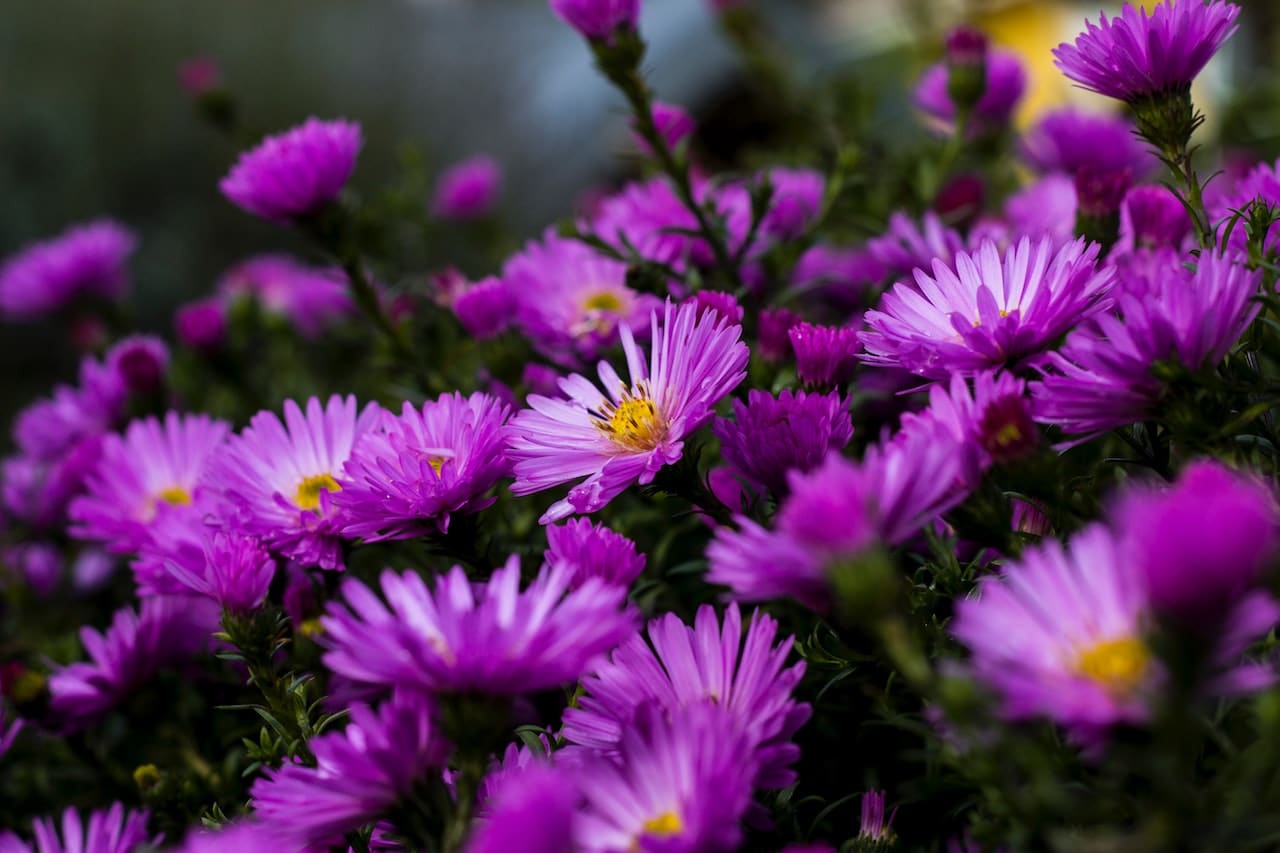
There are many creeping plants that exist in the world, and there is an interesting variety of species that produce very beautiful flowers. These are ideal to have in rockeries, hard-to-reach areas and, of course, in planters or pots.
They grow fast and do not need special care. So if you want to know the names of flowering creeping plants that we recommend, do not stop reading.
Arctostaphylos uva-ursi
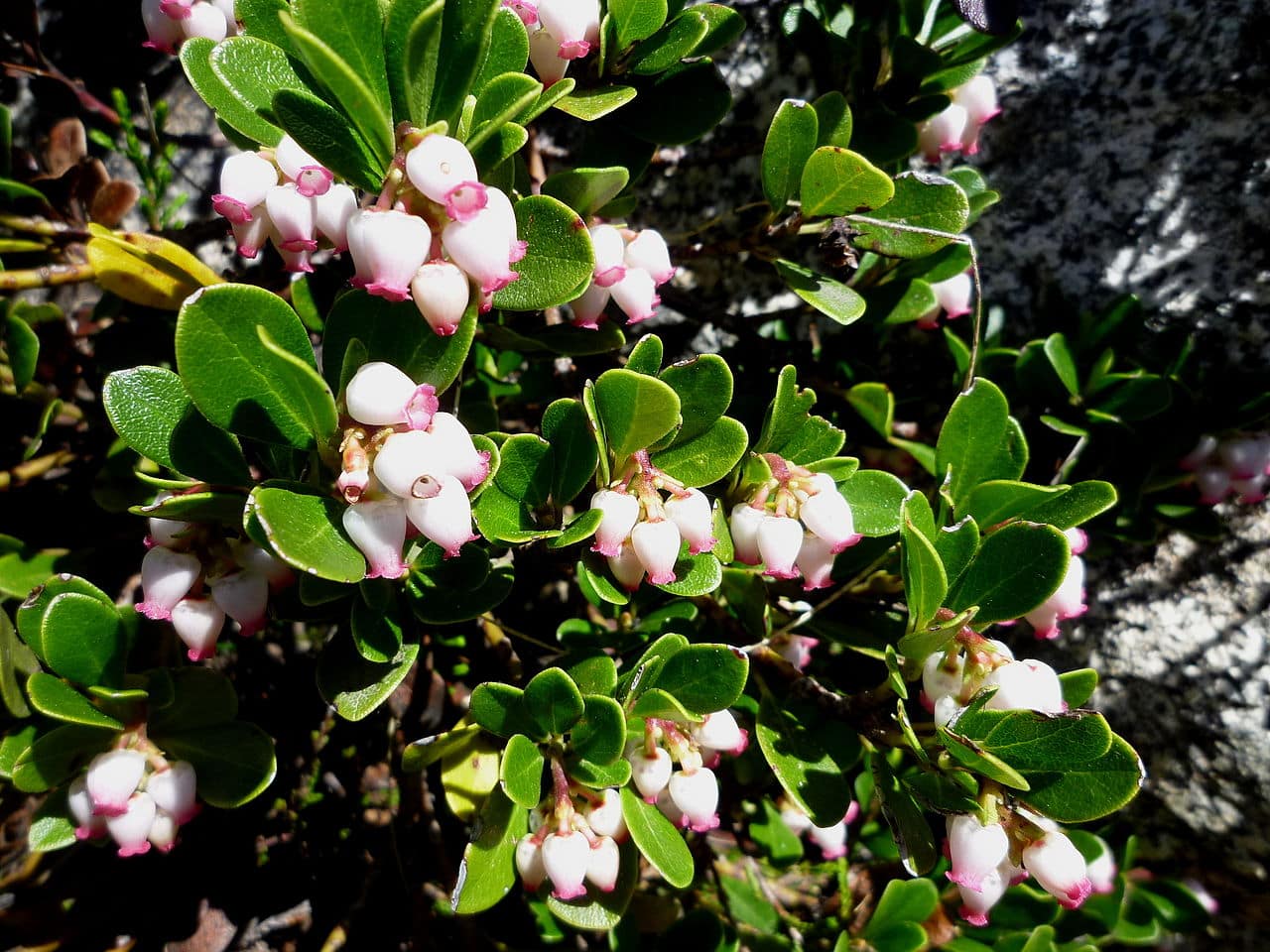
Image - Wikimedia / Isidre blanc
El Arctostaphylos uva-ursi It is an evergreen shrub known as the bear grape plant whose branches reach a maximum length of 2 meters. The total height is about 50 centimeters, and it is native to Eurasia. As for its flowers, these are white or pink, and as a curiosity to tell you that they produce edible fruits.
It is widely used as a creeping plant, being planted in those areas where it will not pass much as it does not tolerate footsteps well. Withstands frosts down to -15ºC.
Convolvulus mauritanicus
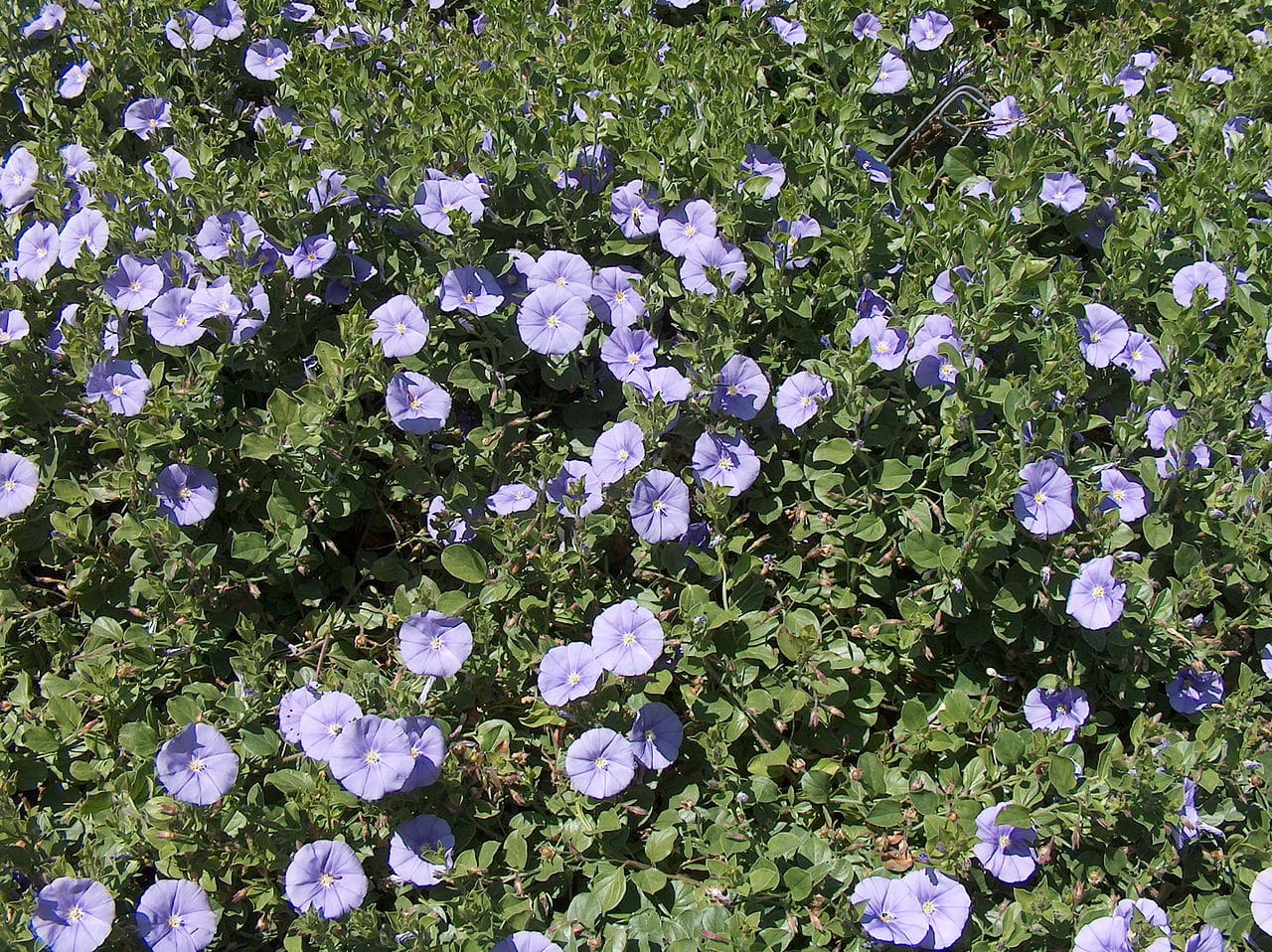
Image – Wikimedia/Valérie & Agnès
El Convolvulus mauritanicus, known as blue bell, is a perennial herb native to Italy and Africa that can be used as a creeper or ground cover since its stems can measure 25 centimeters in length. Its flowers, as you can imagine, are blue and bell-shaped.. They appear during the spring, and measure approximately 2 centimeters in diameter.
Its cultivation is simple, since it supports drought and can (in fact, must) be in full sun. It resists cold as well as frost up to -7ºC.
Hypericum calycinu
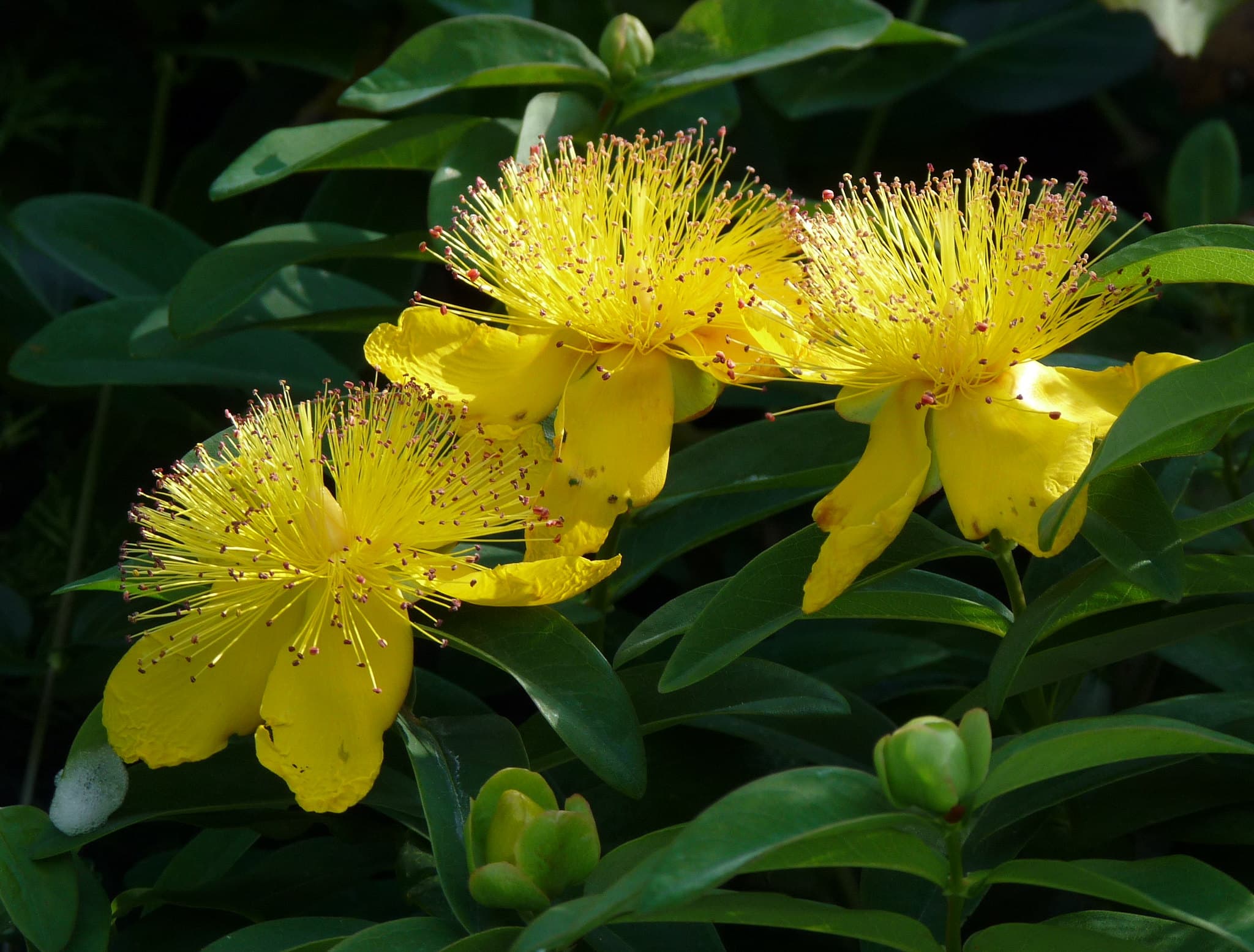
Image – Flickr/Karen Blakeman
El Hypericum calycinum, or creeping St. John's Wort, is a perennial, rhizomatous plant native to Greece and Asia Minor. It grows up to 30 centimeters tall, and develops small green leaves. Its flowers are a beautiful yellow color, and they appear during the summer, in the upper part of the plant.
It is a species that should be planted in a sunny place, since it cannot be in areas with little light. In addition, you will not have to worry about it in winter since withstands frosts down to -20ºC.
Lampranthus spectabilis
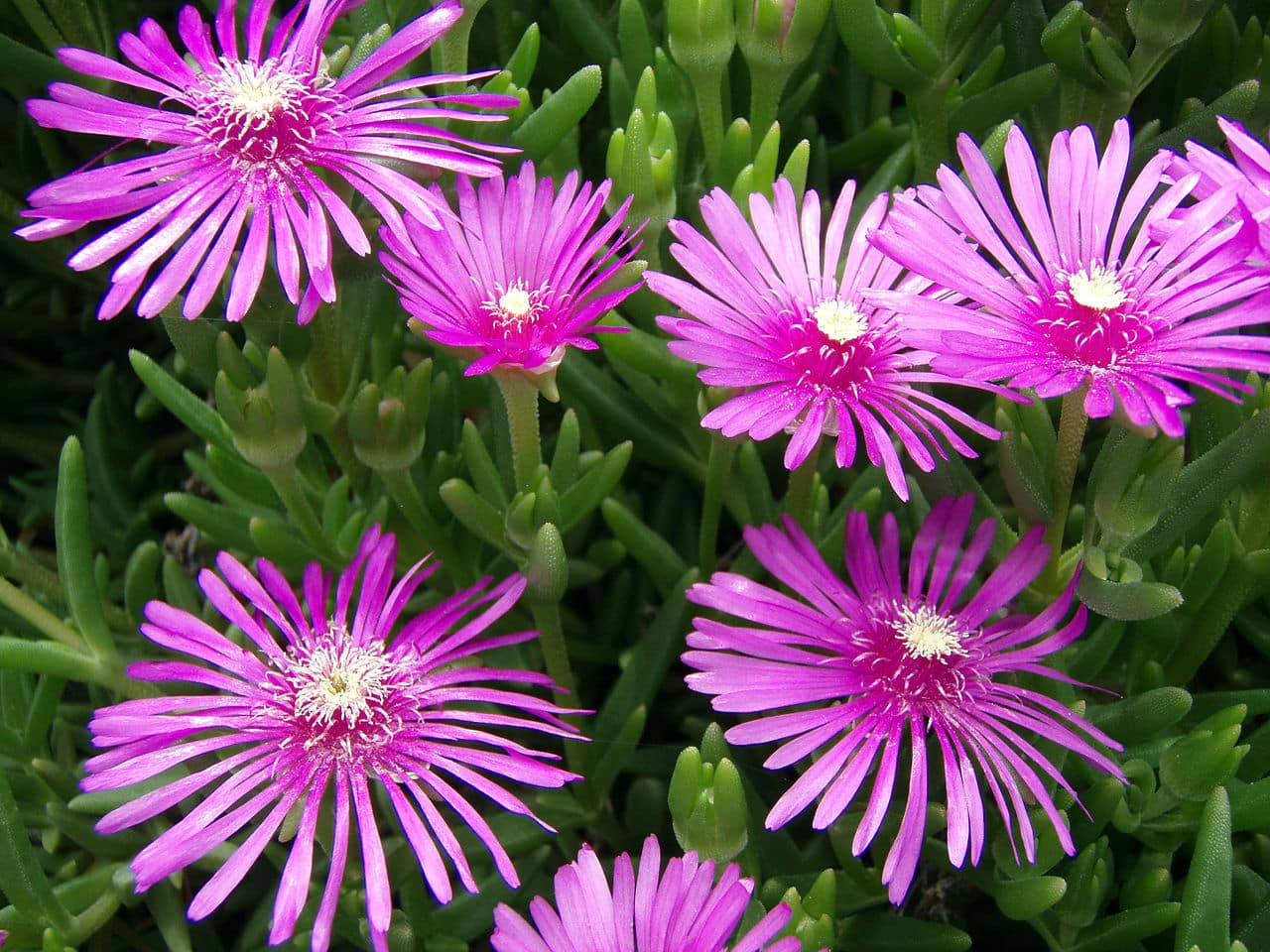
Image - Wikimedia / apple2000
El Lampranthus spectabilis It is a creeping succulent plant native to South Africa. It reaches a maximum height of about 25 centimeters, with stems up to 3 meters long. It has fleshy, lanceolate leaves, and very small, about two centimeters in length. Its flowers are also small, about 1,5cm in diameter, and pink in color.. These appear in spring.
Since it supports drought, it is very interesting to plant in Mediterranean gardens, or in those places where it does not rain much. Also, you should know that it resists frosts down to -5ºC.
Lippia nodiflora
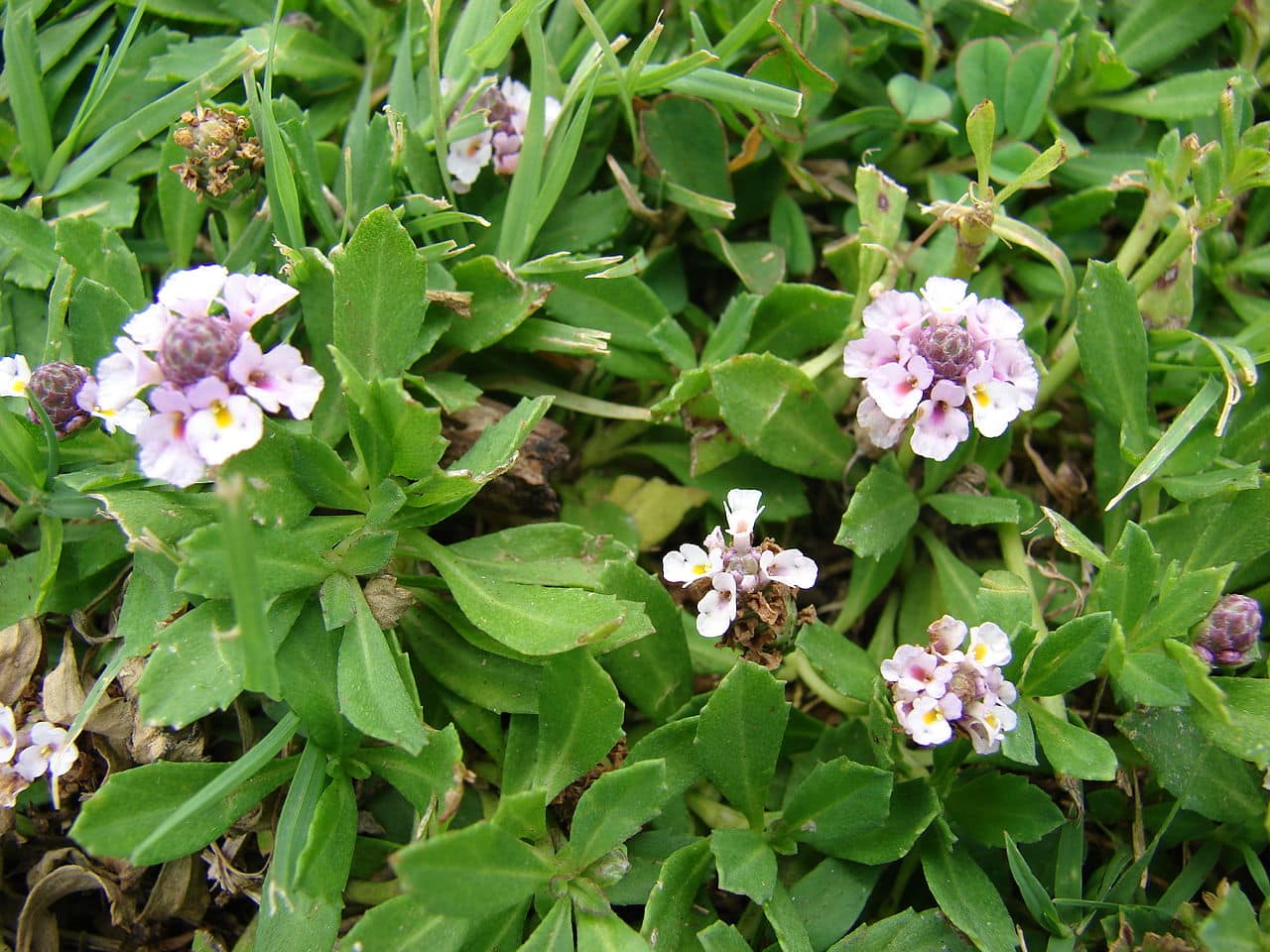
Image - Wikimedia / Forest & Kim Starr
La Lippia nodiflora It is a creeping plant whose stems reach about 90 centimeters long. It is popularly known as a beautiful carpet, since if several specimens are planted nearby, they create a very beautiful carpet. The flowers are small, whitish, and appear in late spring or summer.
Although it supports the cold, you should keep in mind that if the temperature drops to 0 degrees, the leaves will turn reddish. And if there are frosts, they will suffer damage.
Lonicera pileata
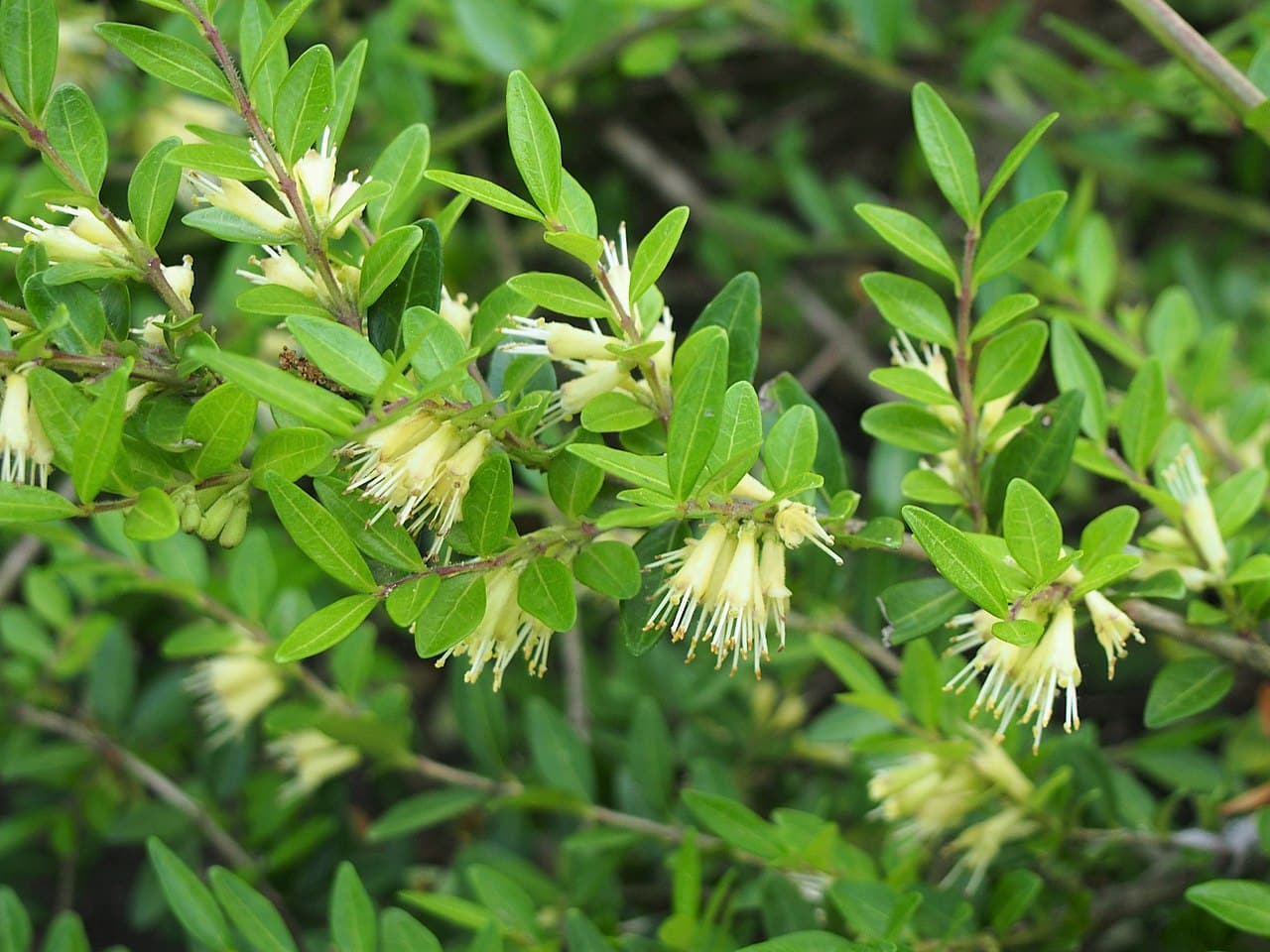
Image - Wikimedia / Agnieszka Kwiecień, Nova
La Lonicera pileata It is an evergreen shrub native to China that can be used as a creeping plant thanks to its long stems that can measure approximately 2 meters long. The leaves are very small and green in color, and produces white flowers, measuring 1 centimeter in diameter. It blooms during the spring.
It must be said that it is not the Lonicera species that produces the most striking flowers, but it is one of the most rustic since holds up to -18ºC.
Maritime mertensia
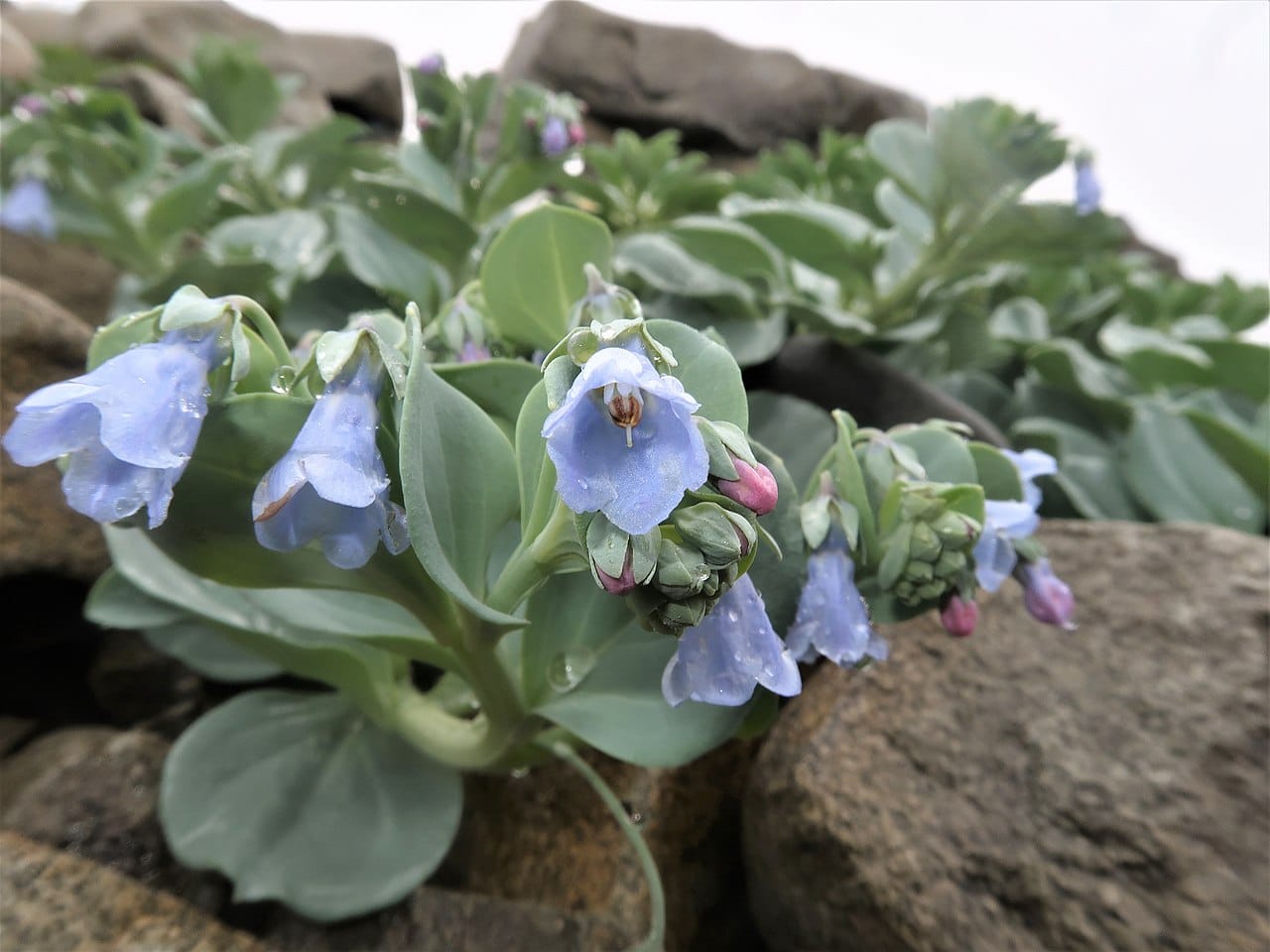
Image - Wikimedia / Qwert1234
La Maritime mertensia It is a perennial herb native to one of the coldest areas of the northern hemisphere, such as northern Canada or the Svalbard archipelago. Its stems can measure 50 centimeters in length, and from them sprout bluish-green leaves. The flowers are bell-shaped, and are blue in color.
It should be put in a sunny place, although if you live in an area where temperatures exceed 30ºC, it is better if it is in shade. Resists up to -15ºC.
Potentilla nitida 'Rubra'
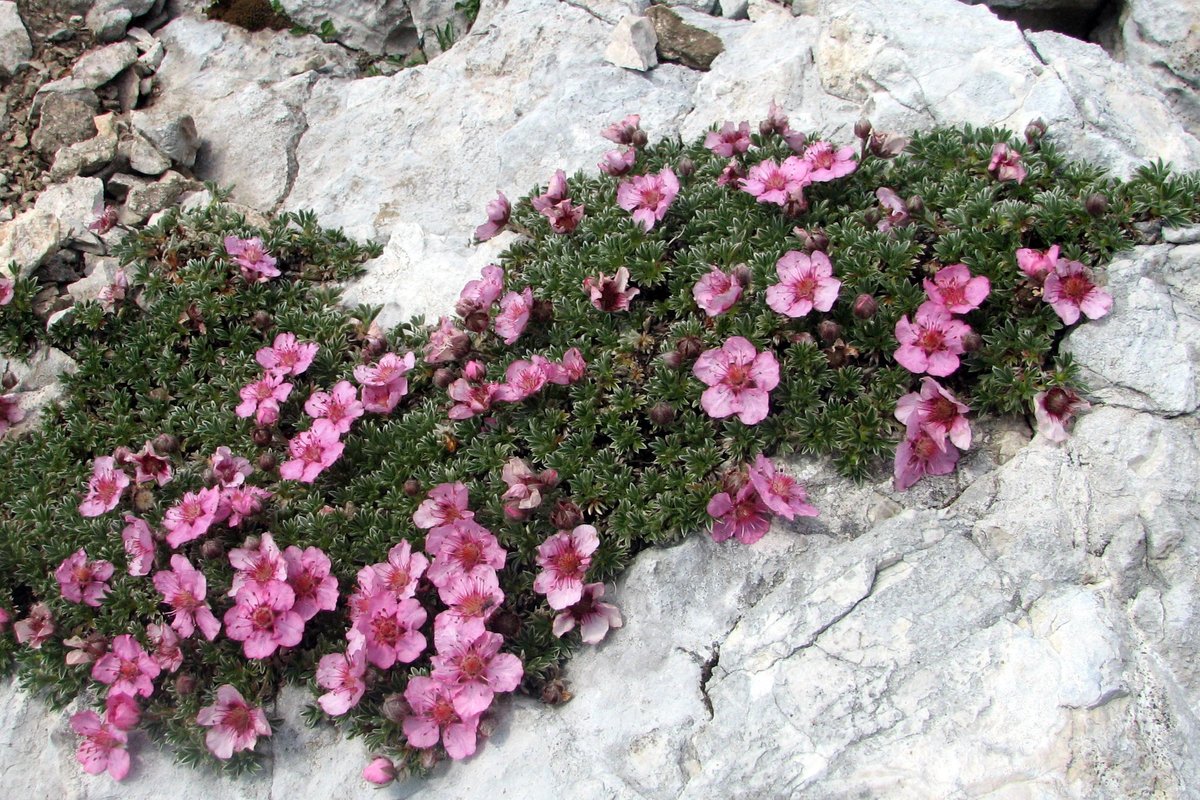
Image – Wikimedia/Sonja Kostevc
La Potentilla nitida 'Rubra' It is a perennial trailing plant native to the northern hemisphere that develops stems up to 1 meter long. The leaves are small and green, and the flowers are pink. Are appear in spring, and measure about 2 centimeters in diameter.
In cultivation it is a very grateful plant, which must be placed in a sunny area so that it can thrive. Resists up to -20ºC.
sagina subulata
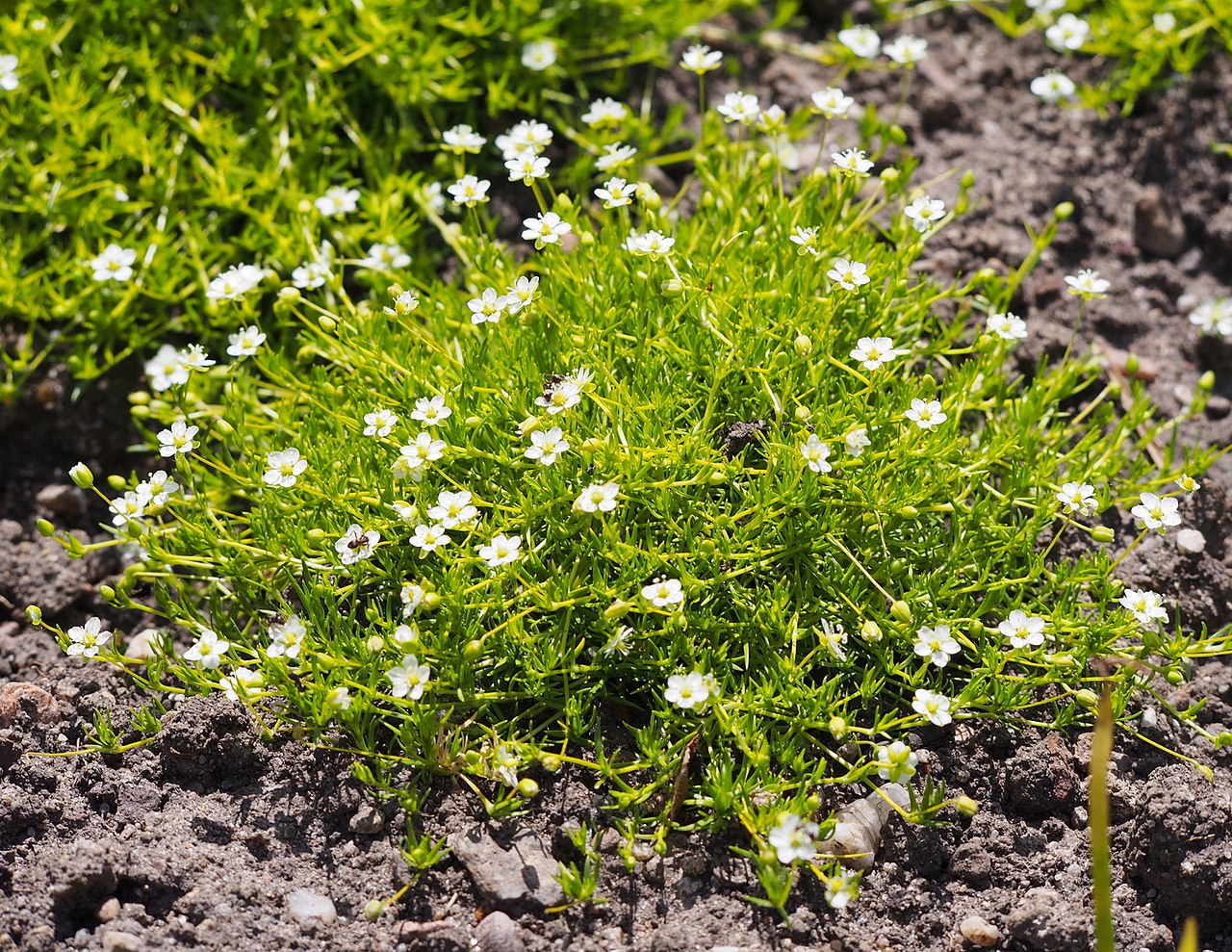
Image - Wikimedia / Agnieszka Kwiecień, Nova
La sagina subulata It is a plant known as Scottish moss. It is native to Europe, and is a herb that reaches a height of about 35 centimeters. Over time, it can create a very pretty green carpet. The flowers are small, whitish in color, and appear in large numbers during the spring.
It is a resistant species, which must be planted in full sun for it to develop normally. Supports up to -15ºC.
vinca minor
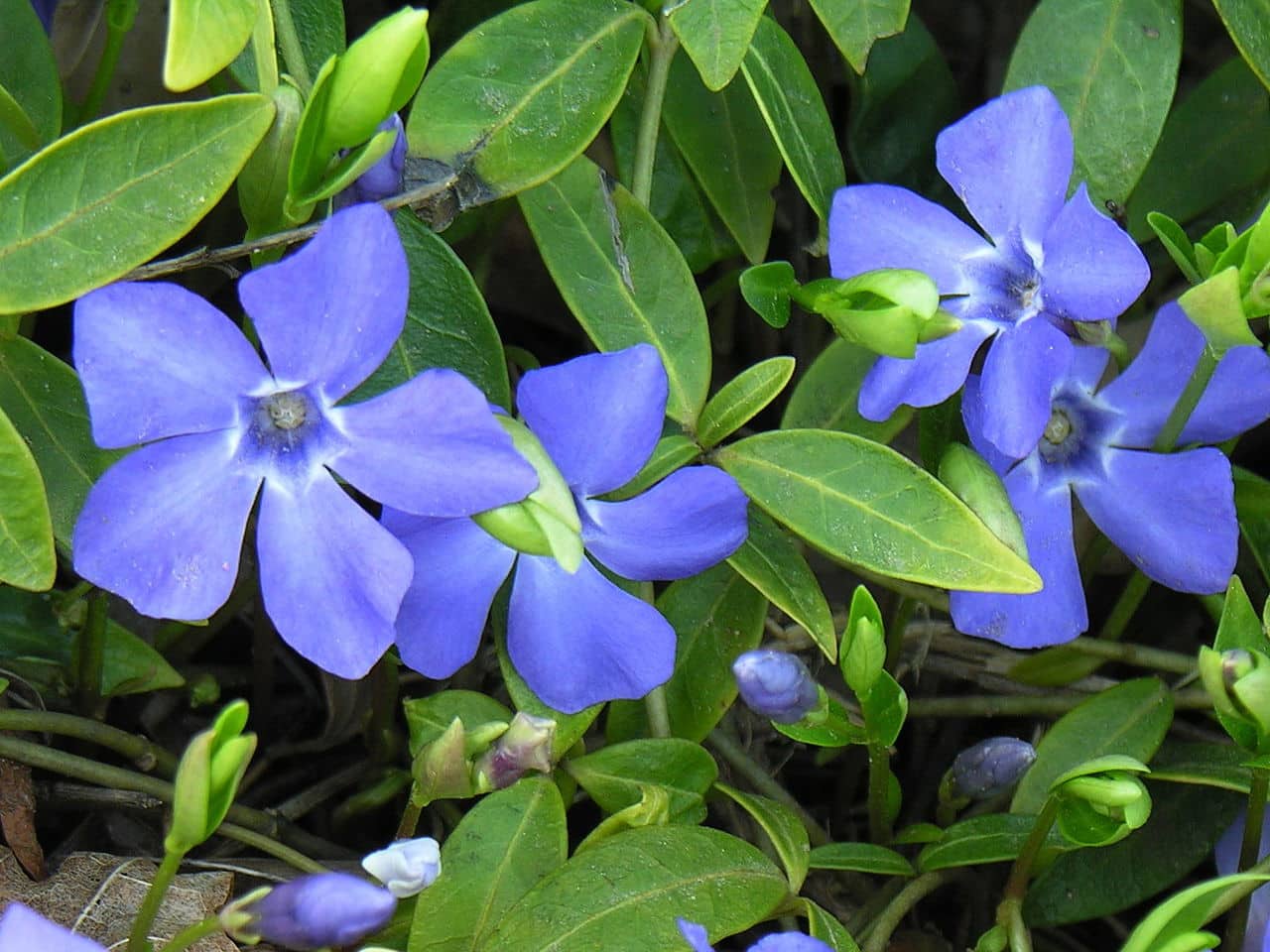
Image - Wikimedia / Algirdas
La vinca minor It is a creeping evergreen shrub or shrub native to central and southern Europe. It develops stems up to 40 centimeters in length, and from them sprout glossy dark green leaves, as well as flowers. Are They are bluish, purple, or whitish in color, and measure approximately 2 centimeters in diameter. They appear in spring and summer.
It is a species of great ornamental interest, which looks great in sunny gardens, as well as in pots. Also It supports frost, up to -20ºC.
Do you know of other creeping flowering plants that can withstand freezing temperatures?